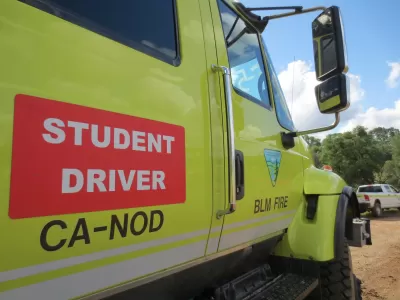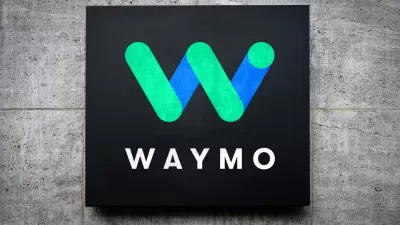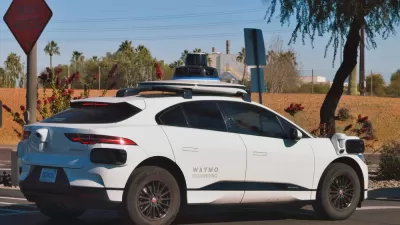Eschewing glamor, Drive.ai's self-driving vehicles use bright coloring, insignia, and LED messages to facilitate better interactions with humans on the road.

Like student drivers operating vehicles advertising that fact, autonomous cars are still learning the fine art of urban navigation. The company Drive.ai recognizes that in its design choices for a ride-hailing pilot currently ongoing in Frisco, Texas.
"The vehicles, modified Nissan NV200s, are certainly the loudest, brightest, and unabashedly dorkiest self-driving cars on the road today," writes Andrew J. Hawkins. Far from sleek, they're designed to alert other road users in no uncertain terms that they're sharing space with a self-driver.
LED screens on the vehicle's exterior provide information on the vehicle's status. Hawkins writes, "when the cars are on ride-hailing trips or on their way to a pickup, the screens will display messages that convey the vehicle's intent to pedestrians and other vehicles on the road. [...] It's intended to replace the gestures or verbal communication often used by human drivers to communicate their intentions." The hope is to "rebuild trust" in autonomous cars after recent incidents.
FULL STORY: The self-driving cars hitting the road in Texas today are unlike any we’ve seen before

Planetizen Federal Action Tracker
A weekly monitor of how Trump’s orders and actions are impacting planners and planning in America.

DARTSpace Platform Streamlines Dallas TOD Application Process
The Dallas transit agency hopes a shorter permitting timeline will boost transit-oriented development around rail stations.

Congressman Proposes Bill to Rename DC Metro “Trump Train”
The Make Autorail Great Again Act would withhold federal funding to the system until the Washington Metropolitan Area Transit Authority (WMATA), rebrands as the Washington Metropolitan Authority for Greater Access (WMAGA).

Supreme Court Ruling in Pipeline Case Guts Federal Environmental Law
The decision limits the scope of a federal law that mandates extensive environmental impact reviews of energy, infrastructure, and transportation projects.

Texas State Bills to Defund Dallas Transit Die
DART would have seen a 30% service cut, $230M annual losses had the bills survived.

Bikeshare for the Win: Team Pedals to London Cricket Match, Beats Rivals Stuck in Traffic
While their opponents sat in gridlock, England's national cricket team hopped Lime bikes, riding to a 3-0 victory.
Urban Design for Planners 1: Software Tools
This six-course series explores essential urban design concepts using open source software and equips planners with the tools they need to participate fully in the urban design process.
Planning for Universal Design
Learn the tools for implementing Universal Design in planning regulations.
Roanoke Valley-Alleghany Regional Commission
City of Mt Shasta
City of Camden Redevelopment Agency
City of Astoria
Transportation Research & Education Center (TREC) at Portland State University
US High Speed Rail Association
City of Camden Redevelopment Agency
Municipality of Princeton (NJ)




























